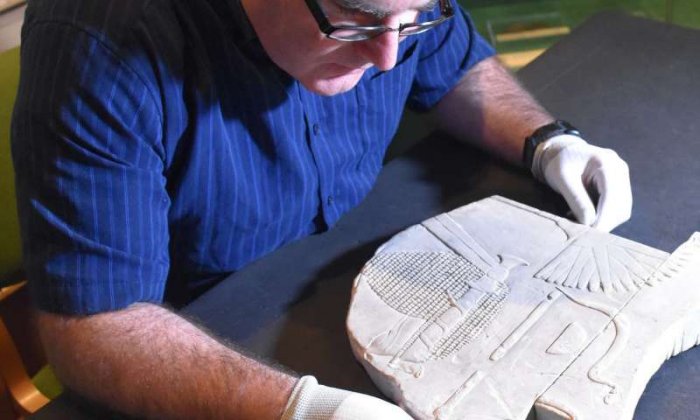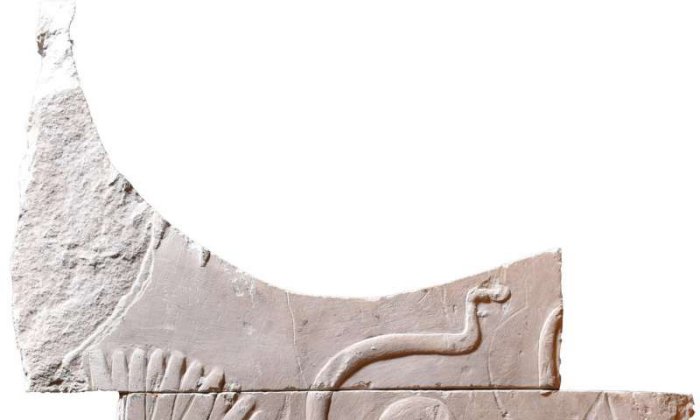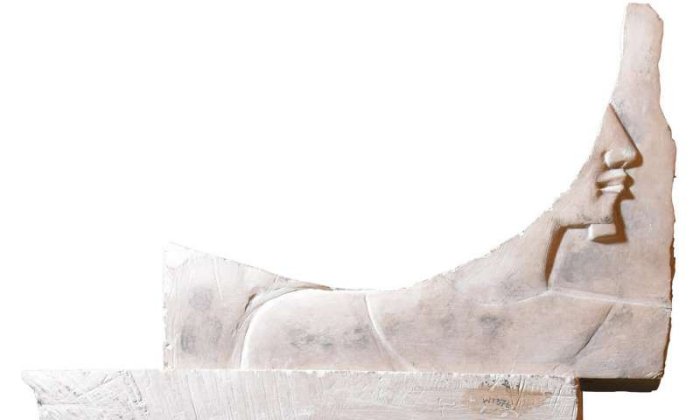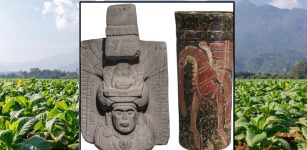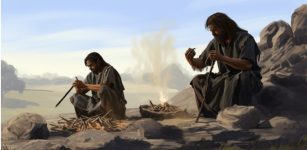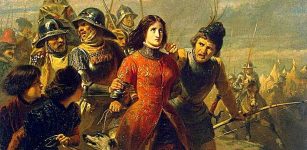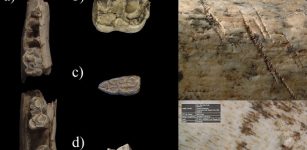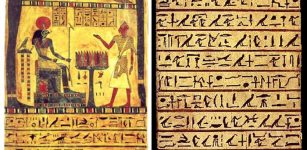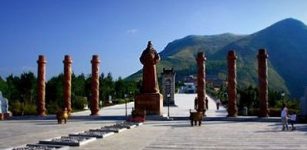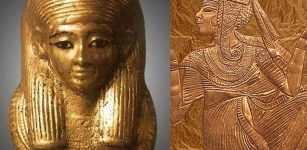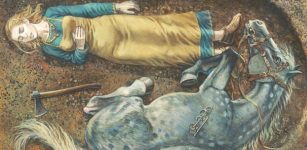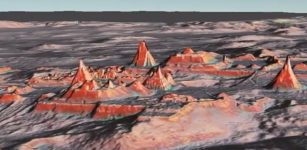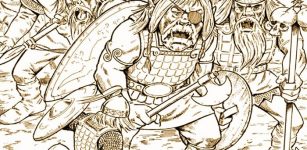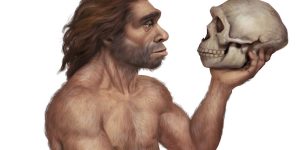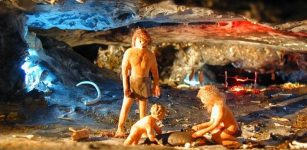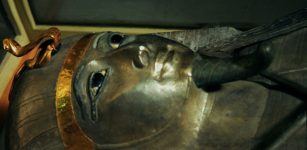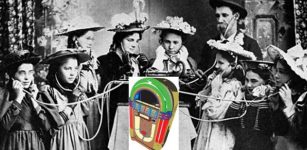Mysterious Depiction Of Pharaoh Hatshepsut
AncientPages.com - Pharaoh Hatshepsut, whose name means "Foremost of Noble Ladies" was a unique individual in the ancient history of Egypt. Her skills, efficiency and personality made her one of the most intriguing and successful pharaohs that reigned in Egypt.
She lived almost three and a half thousand years ago, and ascended the throne of Egypt between 1512 BC and 1479 BC.
Hatshepsut was also one of only a handful of female pharaohs and there are not many depictions of this powerful and intelligent ancient ruler.
Swansea University Egyptology lecturer Dr Ken Griffin has found a mysterious depiction of Pharaoh Hatshepsut worthy more attention.
The depiction consists of two irregularly shaped limestone fragments that have been glued together.
Swansea University Egyptology lecturer Dr Ken Griffin and the newly discovered artifact. Credit: The Egypt Centre, Swansea University
The front side depicts the head of a figure whose face is unfortunately missing, with the remains of a fan directly behind. Traces of hieroglyphs are also present above the head.
The iconography of the piece indicates that it represents a ruler of Egypt, particularly with the presence of the uraeus (cobra) on the forehead of the figure.
Having visited Egypt on over fifty occasions, Dr Griffin quickly recognized the iconography as being similar to reliefs within the temple of Hatshepsut at Deir el-Bahri (Luxor), which was constructed during the height of the New Kingdom. In particular, the treatment of the hair, the fillet headband with twisted uraeus, and the decoration of the fan are all well-known at Deir el-Bahri.
Most importantly, the hieroglyphs above the head—part of a formulaic text attested elsewhere at the temple—use a feminine pronoun, a clear indication that the figure is female.
Early in her reign she was represented as a female wearing a long dress, but she gradually took on more masculine traits, including being depicted with a beard.
Her memorial temple at Deir el-Bahri, built to celebrate and maintain her cult, is a masterpiece of Egyptian architecture.
The front aspect of the artifact. Credit: The Egypt Centre, Swansea University
Many fragments were taken from this site during the late nineteenth century, before the temple was excavated by the Egypt Exploration Fund (now Egypt Exploration Society) between 1902-1909. Since 1961 the Polish Archaeological Mission to Egypt has been excavating, restoring, and recording the temple.
See also:
Pharaoh Hatshepsut: Skillful And Efficient Female Ruler Who Brought Prosperity To Ancient Egypt
Deadly Ancient Secrets Of Queen Hatshepsut’s Flacon
Why Was Pharaoh Hatshepsut’s Reign Virtually Erased From History?
While examining the artifact, Dr Griffin discovered that on the rear of the upper fragment, the head of a man with a short beard is depicted. Initially there was no explanation for this, but it is now clear that the upper fragment had been removed and re-carved in more recent times in order to complete the face of the lower fragment.
Rear aspect of the artifact. Credit: The Egypt Centre, Swansea University
The replacement of the fragment below the figure would also explain the unusual cut of the upper fragment. This was probably done by an antiques dealer, auctioneer, or even the previous owner of the piece in order to increase its value and attractiveness. It was eventually decided at an unknown date to glue the fragments together in the original layout, which is how they now appear.
While Deir el-Bahri seems the most likely provenance for this artifact, further research is needed in order to confirm this and it may even be possible to one day determine the exact spot the fragments originated from.
Given the importance of the object, the head of Hatshepsut has now been placed on display in a prominent position within the House of Life at the Egypt Centre so that the relief can be appreciated by visitors to the Centre.
AncientPages.com
Expand for references
